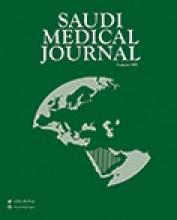Abstract
OBJECTIVE: To compare the serum levels of inflammatory mediators in high altitude (HA) native rats, and to search for the possible underlying mechanism(s).
METHODS: The study was carried out between January and April 2013. Fifty male rats from the same genetic pool were bred at either a HA or low altitude (LA) area. The study was carried out in 2 stages. In the first stage, serum levels of inflammatory markers, adhesive molecules, lipid profiles, catecholamines, magnesium (Mg+2), and lipid peroxidation were compared between theses 2 groups. In the second stages, inflammatory response and lipid peroxidation were analyzed in HA native rats after treatment with either alpha (Prazosin) or beta (propranolol) adrenergic blockage.
RESULTS: The HA native rats showed significant increases in the serum levels of inflammatory cytokines, lipid profiles, as well as a significant increase in the urinary norepinephrine with a concomitant decrease in the serum levels of Mg+2 and increased lipid peroxidation. Blockage of the beta and alpha adrenergic receptors of the HA rats caused partial or complete decreases in both inflammatory and oxidative stress mediators.
CONCLUSION: Living under HA conditions results in an increased systemic inflammatory reaction; an effect that is mediated through the sympathetic nervous system mainly via alpha-adrenergic receptors and could be attributed to low Mg+2 levels.
- Copyright: © Saudi Medical Journal
This is an open-access article distributed under the terms of the Creative Commons Attribution-Noncommercial-Share Alike 3.0 Unported, which permits unrestricted use, distribution, and reproduction in any medium, provided the original work is properly cited.






